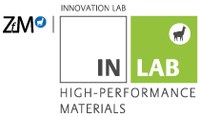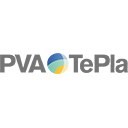Production, characterization and optimization of gallium nitride high-performance electronics on silicon carbide substrates
- Production, characterization and optimization of gallium nitride high-performance electronics on silicon carbide substrates
-

Partner: PVA CGS GmbH (Wettenberg)
The semiconductor SiC is an ideal substrate material for GaN-based or SiC-based high-performance electronics, which are of extreme importance, for example, for electromobility and for the G5 mobile communication standards. SiC substrates can be produced by sublimation growth using a seed crystal, also known as physical vapour transport (PVT) or by high-temperature chemical vapour deposition (HT-CVD). The PVT process is currently evolving into the standard industrial process for the growth of monocrystalline SiC. Challenges in the production of monocrystalline SiC substrates are the polymorphism of the material system and the formation of defects such as the intrinsic tendency towards the formation of so-called pinholes, nanotubes or extrinsic effects during crystal growth.
In this subproject, the following aspects will be explored:
- the growth of GaN layers on SiC substrates by means of molecular beam epitaxy, sputtering or atomic layer deposition
- the correlation between the structural properties of the SiC substrates and those of the GaN layers
- the suitability of the grown GaN layers for their for high-performance components.
In addition to quality optimization of the individual process steps along the development chain from substrate to device, another focus is on fast process control. SiC substrate material of different doping and structural quality made available by PVA CGS allows us to broadly cover the parameter space when investigating the correlation between the structural properties of the SiC substrate and tose of the deposited GaN layer. In this fashion, a corresponding material database can be set up, which can form the basis for fast process control in the future. Such a material database can, for example, be used in combination with multivariate data processing methods for in-line process control. The data on which it is based include X-ray diffractograms, ESR spectra, but also maps of the sample surface measured locally on inhomogeneous substrates using Raman microscopy, optical microscopy and electron microscopy.
This pilot project will be tackled in cooperation between the company PVA CGS and the innovation laboratory in which the research work is carried out. PVA CGS employees are directly involved in the project and PVA CGS provides extensive substrate material.
More informations: mail to Dr. Jörg Schörmann
- Index Innovationlab

